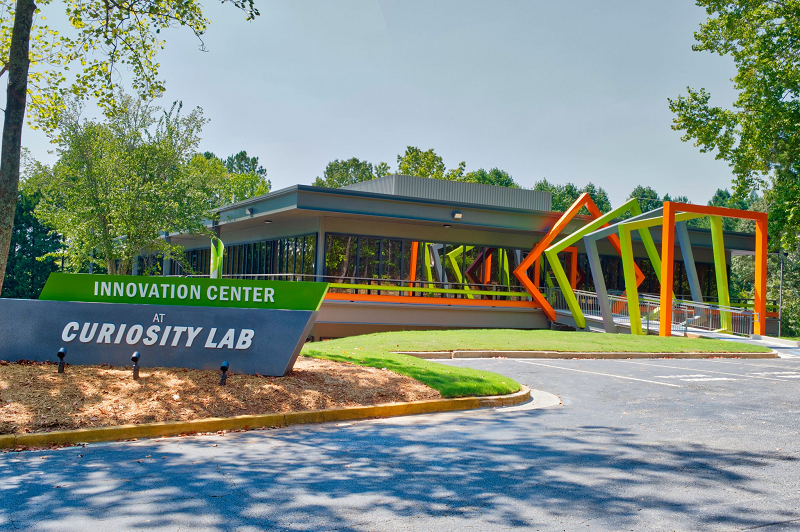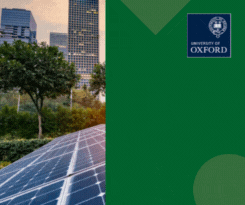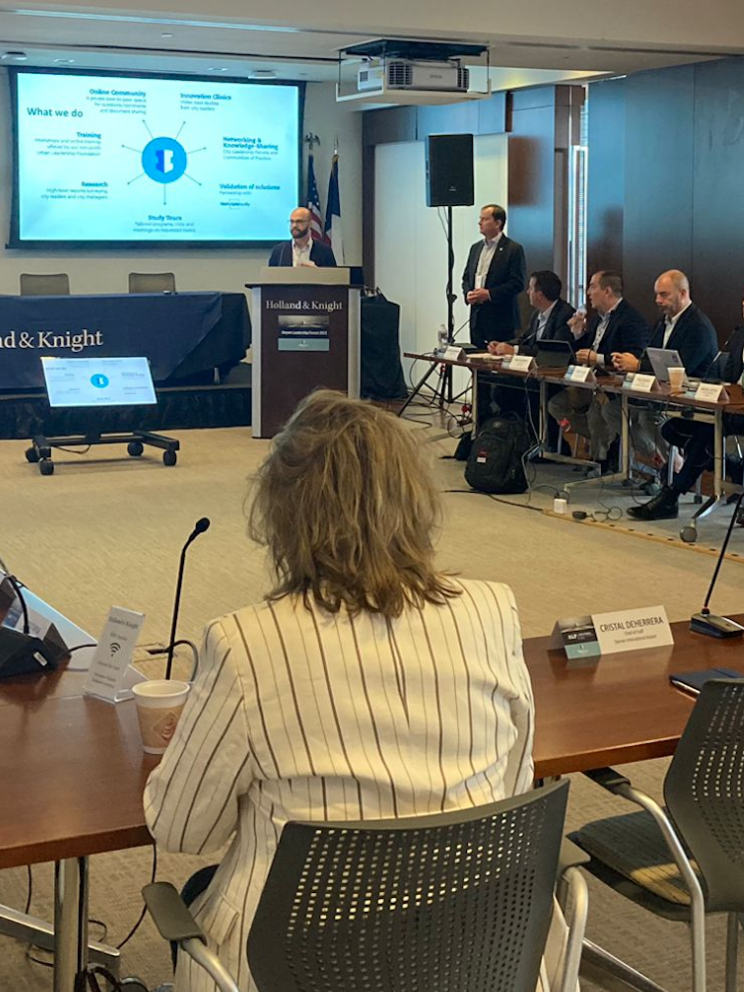
Photo: City of Peachtree Corners
Smart city lessons from a living lab
02 March 2021
By: Betsy Plattenburg, Executive Director, Curiosity Lab at Peachtree Corners
At CES, the Consumer Technology Association debuted six key trends to watch this year. Smart cities, vehicle technology and 5G connectivity all made the list. Rightly so as companies, universities and governments strive to create next-generation tech today.

Curiosity Lab at Peachtree Corners, a unique public/private collaboration in the Atlanta suburb of Peachtree Corners, is already facilitating real-world testing of these technology trends. Opened in 2019, Curiosity Lab is the world’s first 5G-enabled living laboratory for testing, demonstrating and deploying autonomous vehicle and smart city technology. The publicly funded organisation works with universities and companies of all sizes to test emerging technology in a 5G-connected environment featuring a three-mile advanced vehicle test track.
Below are examples of how smart city, vehicle technology and 5G technology are already at work at the Lab, as well as key lessons learned from these initiatives other cities and technology innovators should keep in mind.
Smart city testing in the real world
Smart city technology collects data from and about people and infrastructure so as to improve efficiency and quality of life. Think smart traffic lights for better traffic control, air quality sensors and more. The smart cities market is expected to double over the next several years, from US$410.8 billion in 2020 to US$820.7 billion by 2025.
Regardless of the type of smart city technology being tested, developers must have access to real-world testing sites. For example, the Lab’s three-mile vehicle test track runs alongside the main roadway in a 500-acre tech park where cars and people cross it more than 30 times as they go about their daily activities.
Since Curiosity Lab opened in September 2019, more than 20 companies have come to test, demo or deploy new concepts. For example, the Bosch Building Technologies division used the track’s connected intersection to test its video-as-a-sensor technology.
Here are several key lessons Curiosity Lab learned along the way:
- Listen to your stakeholders, both current and prospective. Our original plan was for a one-way 1.5-mile track, but we received feedback that it needed to be longer and bidirectional to be most useful. Today, the track is built as a three-mile loop. Prospective testers wanted to test smart traffic light applications, so an intersection was reconfigured from a three-way stop to a traffic signal that can be monitored from the network operations control centre.
- Cities are experts at infrastructure management. Cities plan, own and operate infrastructure for the benefit of their citizens. Coordinating transportation, utilities, roadways, business development and residential growth is what cities do. Creating a specialised economic development arm to leverage this expertise and make it available to tech companies helps speed up innovation by allowing each partner to focus on what they do best.
- Innovation comes in all sizes. Early-stage startups and Fortune 500 companies alike innovate. All are welcome. Curiosity Lab works with academic, corporate and startup partners to facilitate testing and discovery. Connecting people is one of the special sauce benefits of Curiosity Lab. We have found that innovators working in adjacent markets often aren’t aware of technology overlap. We make connections that speed innovation in unexpected ways.
Vehicle technology: Autonomous vehicles, micromobility and EV charging
Advanced vehicle innovation is multifaceted, from driver assist features in cars on the road today to fully autonomous vehicles. Vehicles of the future will come in different sizes and have different power sources.
Local Motors deployed its 3D-printed Olli autonomous shuttles at the Lab for four months. It was the first time that the shuttles had run alongside real traffic. A bonus was that Local Motors allowed residents to take daily rides, adding a level of education and fun to what would otherwise be routine testing.
On the micromobility side, 100 of the world’s first teleoperated e-scooters are being tested daily. Summoned via an app, TortoiseAI technology helps remote drivers deliver scooters to users on-demand. Front-mounted cameras and GPS allow off-site drivers to reposition the scooters to a central location for safe parking, charging and cleaning.
With the explosion of electric vehicle growth, one interesting current test involves the installation of the country’s first road surface-powered solar panels, which produce energy for a nearby electronic vehicle charging station.
Key takeaways from these vehicle initiatives for other smart city and AV labs include:
- Embrace your environment. Pine straw – a staple of life in the South – provided challenges for the shuttles as it fell on the track daily in new patterns, making the roadway unpredictable. Additionally, the track’s 13 percent grade, sweeping curves and tree shade challenges AVs’ vision systems but results in invaluable real-world challenges.
- Be flexible and keep your eyes on the long game. Innovation changes even the best laid plans. Curiosity Lab today is bigger and better than we imagined in large part due to partners who co-invested in the vision by adding infrastructure to the Lab for mutual benefit.
- Branch out. Smart city and AV labs should not limit themselves to working with just one innovator. Curiosity Lab invites multiple innovators working on different ideas to solve the same or similar challenges to test simultaneously. Our goal isn’t to pick winners but to provide a proving ground for as many opportunities as we can.
The power of 5G at work
5G will transform entire industries. Low latency and incredible speed – think instantaneous connectivity – opens the door to big leaps forward in innovation. Curiosity Lab is already riding this wave as a test lab for 5G innovation, providing 5G access to companies at no charge, courtesy of our corporate partner, T-Mobile.
Additionally, in February, Curiosity Lab and the T-Mobile Accelerator partnered to create a Connected Future Incubator programme at the Advanced Technology Development Center (ATDC) at Georgia Tech. Startups from around the world will be recruited to take advantage of Georgia Tech expertise, T-Mobile 5G and subject matter experts and Curiosity Lab infrastructure, creating an unparalleled coaching experience to fast-track new technologies. Initial inquiries indicate strong interest from mobility startups.
Leveraging public infrastructure, a leading technical university and Fortune 500 company all focused on the same goal will undoubtedly uncover and accelerate the growth of new ideas.








